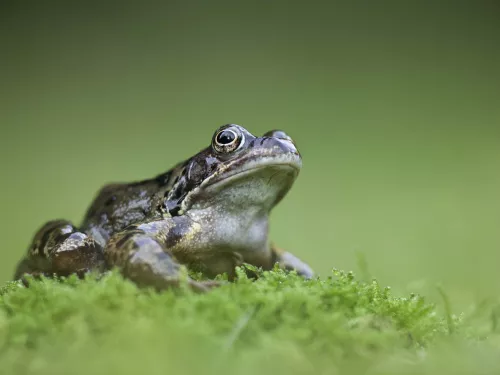Common dog-violet
Our most familiar wild violet, the Common dog-violet can be spotted in a range of habitats from woodland to grassland, hedgerows to pastures. Its pansy-like, purple flowers appear from April to June.
Our most familiar wild violet, the Common dog-violet can be spotted in a range of habitats from woodland to grassland, hedgerows to pastures. Its pansy-like, purple flowers appear from April to June.
These energetic dolphins are often spotted in large groups which will approach boats, bowriding and leaping alongside. At sea, they can form superpods - huge groups made up of thousands of individuals!
The vast, green mats that sometimes cover the surface of still water, such as ponds, flooded gravel pits and old canals, are actually Common duckweed. A tiny, single plant, it groups together to form 'lawns'.
Despite popular belief, and its name (from the Old English for 'ear beetle'), the Common earwig will not crawl into your ear while you sleep - it much prefers a nice log or stone pile! It feeds on organic matter, recycling important nutrients.
This seagrass species is a kind of flowering plant that lives beneath the sea, providing an important habitat for many rare and wonderful species.
An introduced species, Common evening-primrose is now naturalised on waste ground, roadside verges and railway cuttings. It has long been used to produce the herbal remedy, evening-primrose oil.
The diminutive common eyelash fungus can be found on wet wood and humous-rich damp soil, often by streams or in wet places. Its orange cup is fringed with tiny, black hairs, providing its common name.
The Common field grasshopper can be found in sunny, grassy areas, particularly gardens, throughout summer. Males can be seen rubbing their legs against their wings to create a 'song' for the females.
The Common fragrant-orchid lives up to its name: it produces a sweet, orangey smell that is very strong in the evening. Look for its densely packed, pink flower spikes on chalk grasslands in summer.

Our most well-known amphibian, the common frog is a regular visitor to garden ponds across the country, where they feast on slugs and snails. In winter, they hibernate in pond mud or under log piles.
In spring and summer, look out for 'cuckoo-spit' - the frothy mass of bubbles that appears on plant stems everywhere. This is actually the protective covering for the nymphs of the tiny Common froghopper.
A scrambling 'weed' of waste ground, fields and gardens, Common fumitory can be found on dry and disturbed soils. Its pink flowers appear over spring and summer.